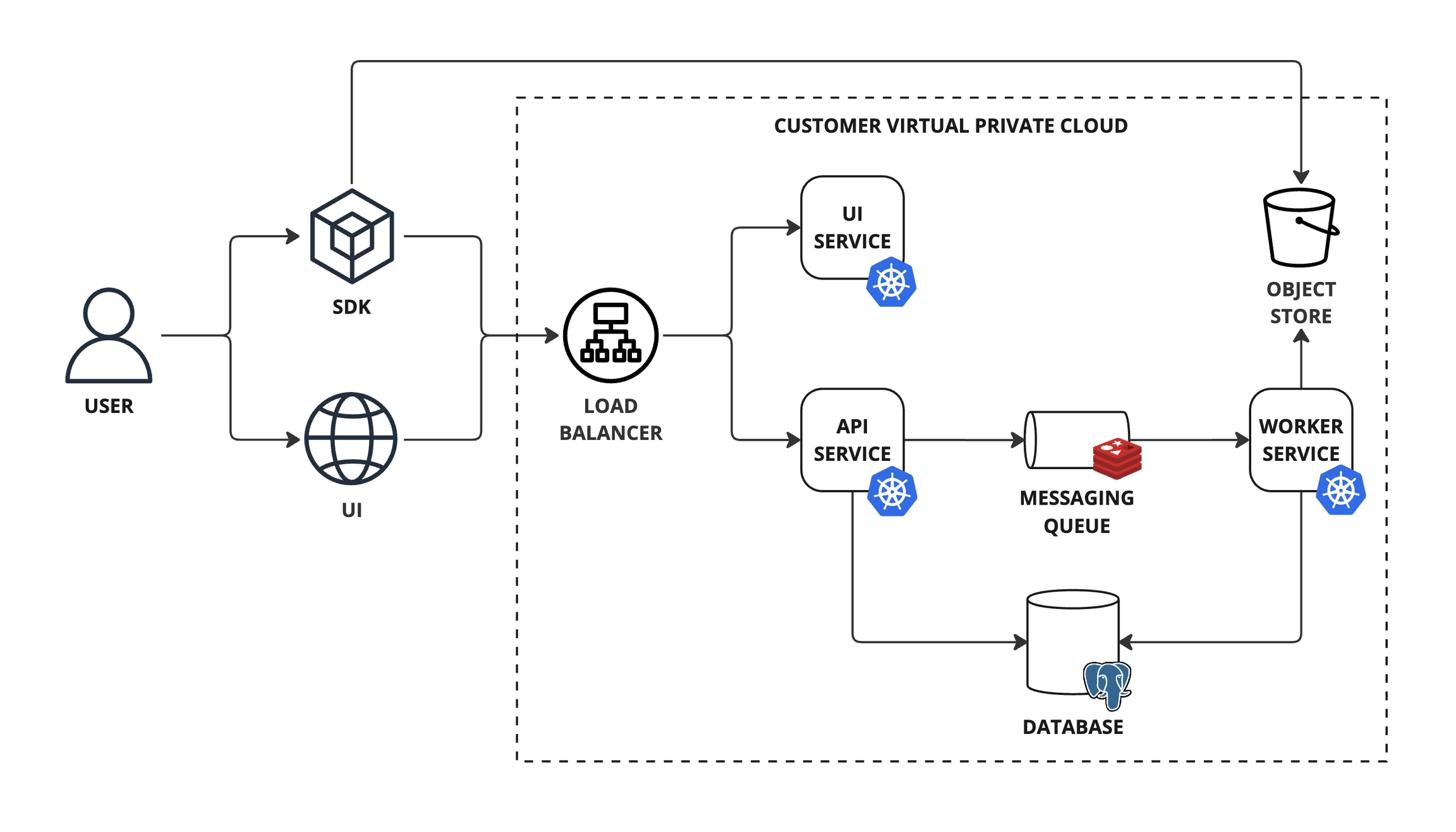Architecture
An overview of the architecture for the dbnl platform
The dbnl platform architecture consists of a set of services packaged as Docker images and a set of standard infrastructure components.

Infrastructure
The dbnl platform requires the following infrastructure:
A Kubernetes cluster to host the dbnl platform services.
A PostgreSQL database to store metadata.
An object store bucket to store raw data.
A Redis database to serve as a messaging queue.
A load balancer to route traffic to the API or UI service.
Services
The dbnl platform consists in three core services:
The API service (api-srv) serves the dbnl API and orchestrates work across the dbnl platform.
The worker service (worker-srv) processes async jobs scheduled by the API service.
The UI service (ui-srv) serves the dbnl UI assets.
Was this helpful?

